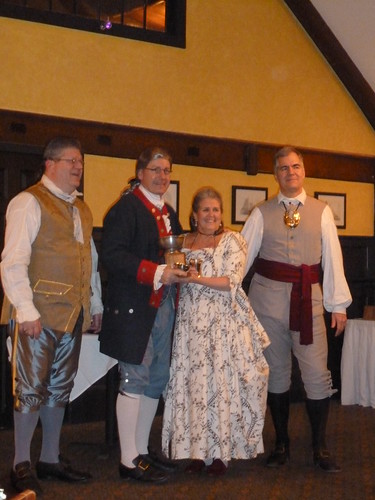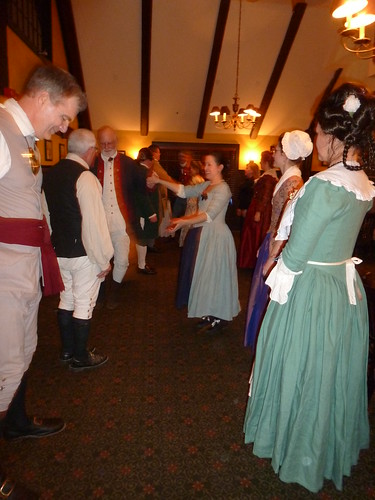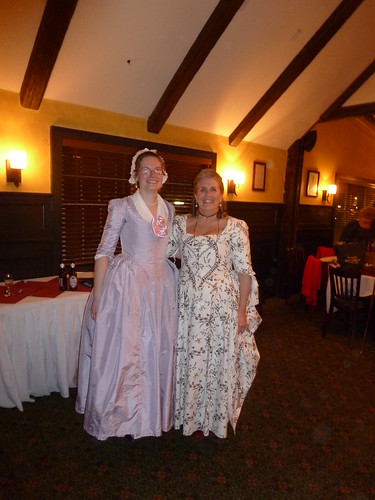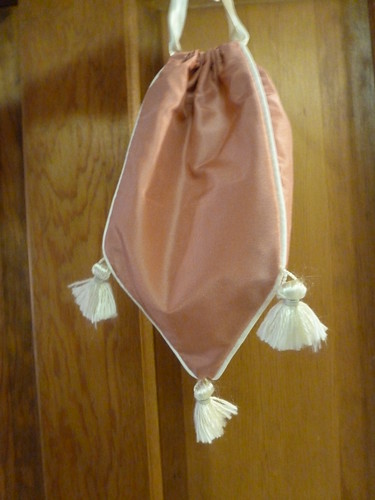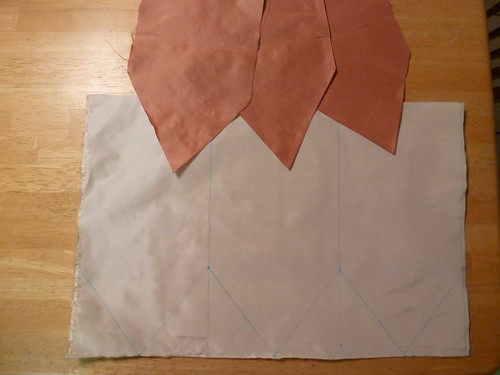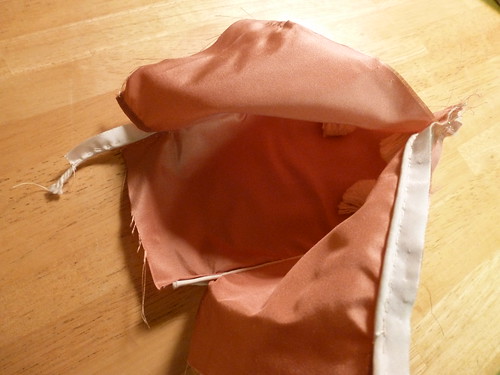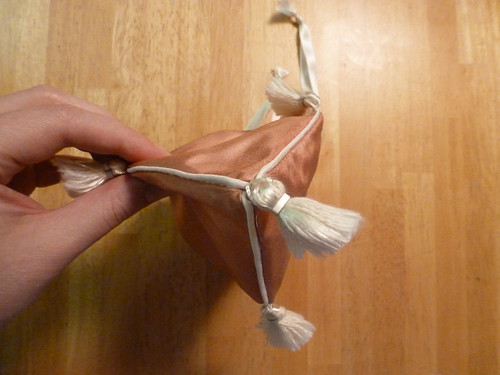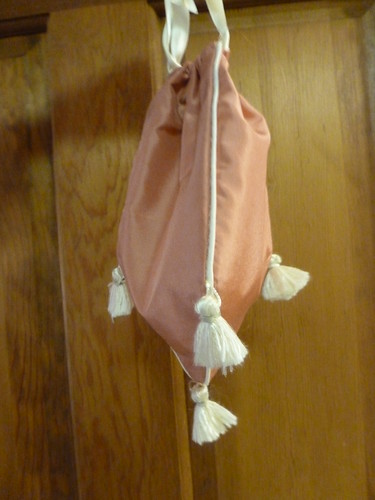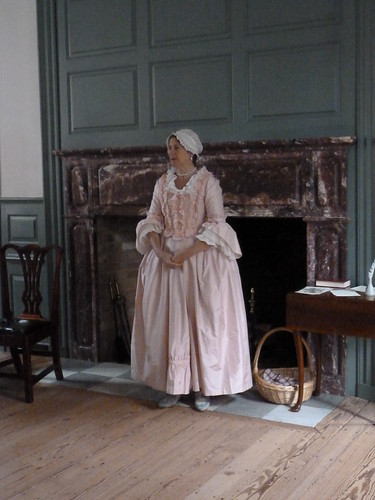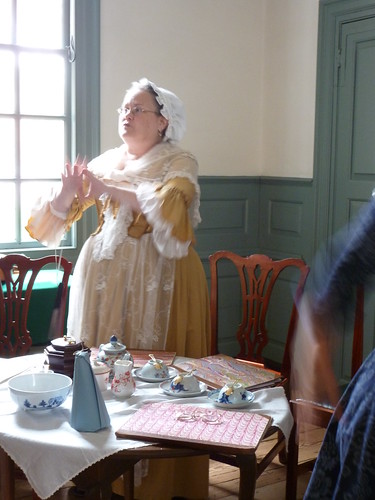A few weekends ago, we spent a day exploring some exhibits at the
Yale University Art Gallery and the
Yale Center for British Art (more on visiting the YCBA later). The exhibit
Life, Liberty, and the Pursuit of Happiness is being presented at the Yale University Art Gallery in three parts, and author David McCullough even narrates part of the audio tours! (
Read the press release announcing the exhibit.) I was able to catch a quick visit to the first installment,
We the People, just before it closed at the end of 2011. American paintings and other works of art, along with furniture, medals, and other objects both significant and everyday depicted an overview of our nation as it began to evolve from the very first settlements up through the American Revolution. My favorite pieces (and quite honestly, the reason for my visiting the exhibit in the first place) were the works of John Trumbull.
Self-Portrait
ca. 1802
Artist: John Trumbull, American, 1756 - 1843
Gift of Marshall H. Clyde, Jr.
1981.129.1
On display were several of his miniatures and sketches, along with his series of history paintings that depict some momentous events of the American Revolution. I was awestruck to be standing in front of his
Declaration of Independence - and even more excited that the brochure for the exhibit features a large fold-out poster of this work! The first version of this painting is smaller (20 7/8 x 31 in.), as compared to the second, life-sized version that so famously hangs in
the rotunda of the U.S. Capitol. Trumbull actually painted a third version as well, owned by the
Wadsworth Atheneum in Hartford, CT. Trumbull made slight changes in each of these versions, adding or deleting a man or two, as well as changing the look of the room in his last version.
At the time, and even still today, these paintings receive criticism for their inaccuracies. Most prominently, his
Declaration of Independence depicts all of the signers gathered together to sign the document at one time, which we know was not the case. Some of these inaccuracies were discussed recently in
this interactive page by Colonial Williamsburg, where you can even scan over each man to see his name. I uploaded each version of this painting and had fun comparing them side-by-side and noting the numerous slighter differences, such as the carpet that disappears and the way the cloth on the table changes. I think my favorite evolution through these different versions is how John Adams seems to get younger...and thinner! What do you see?
The Declaration of Independence, July 4, 1776
1786-1820
Artist: John Trumbull, American, 1756 - 1843
Trumbull Collection
1832.3
Declaration of Independence
John Trumbull
Oil on canvas, 12' x 18'
Commissioned 1817; purchased 1819; placed 1826
John Trumbull
The Declaration of Independence, July 4, 1776
1832 Purchased by Daniel Wadsworth and members of the Atheneum Committee
1844.3
http://www.thewadsworth.org/american/?nggpage=5
I also spent quite some time admiring Trumbull's life-sized portrait of General George Washington at Trenton. This portrait was commissioned by the city of Charleston, South Carolina, but upon completion they decided they preferred a different portrait of Washington. Trumbull thus kept this painting in his collection for some time before gifting it to the Society of the Cincinnati in Connecticut, which in turn presented it to Yale. Examining this portrait close-up, I was amazed at the magnificence of the colors in addition to the incredible details.
General George Washington at Trenton, 1792
Artist: John Trumbull, American, 1756 - 1843
Gift of the Society of the Cincinnati in Connecticut
1806.1
The second installment of this exhibit,
Defining the Nation, is now open at the YUAG and will be on display through April 8, 2012. We spent some time admiring this installment a few weeks ago. Much like the first, the exhibit utilizes American furniture, paintings, prints, and other media to present the continuing story of our nation as industrialization and the country's economy began to evolve.
One of the most interesting stories from this exhibit was that of the New York Crystal Palace. The Crystal Palace was built in 1854 for the Exhibition of the Industry of All Nations. The building was used on and off for several years and was also host to the Annual Fair of the American Institute when a fire broke out in 1858. The entire building, along with the valuable objects inside, was completely destroyed in under an hour. These prints by Currier & Ives dramatically capture the magnificence and the demise of the Palace:
New York Crystal Palace: For the Exhibition of the Industry of All Nations.
1853
Artist: Frances Flora Bond Palmer (known as F. F. Palmer), American, 1812 - 1876
Publisher: Currier & Ives, American, active 1834 - 1907
Mabel Brady Garvan Collection
1946.9.1625
Burning of the New York Crystal Palace: On Tues. Oct. 5th 1858.
During its Occupation for the Annual Fair of the American Institute.
1858
Publisher: Currier & Ives, American, active 1834 - 1907
Mabel Brady Garvan Collection
1946.9.1626
The final segment of this three-part exhibit, America Rising, will open at the Yale University Art Gallery May 8 and run through July 8, 2012. You can learn more about the YUAG, its collections, and vising the gallery through its website: http://artgallery.yale.edu/. If you are interested in exploring more of the gallery's pieces online, please visit the eCatalogue.
Some of the information I shared on John Trumbull was found in Helen Cooper's book,
John Trumbull, The Hand and Spirit of a Painter, published in 1982 by the Yale University Art Gallery. I've been researching Mr. Trumbull and have come across some other interesting stories that I hope to share here soon.






